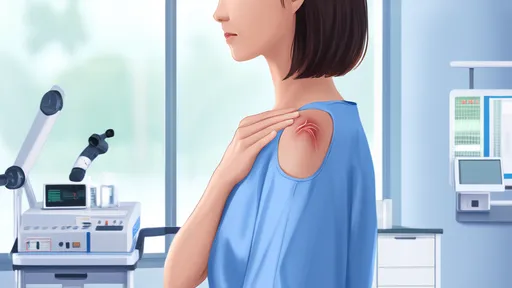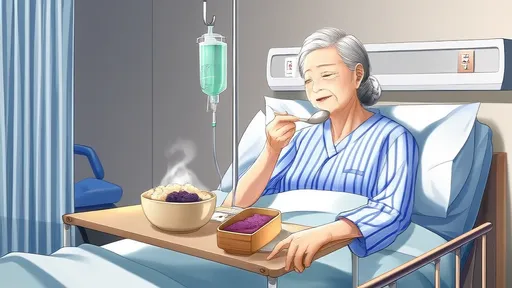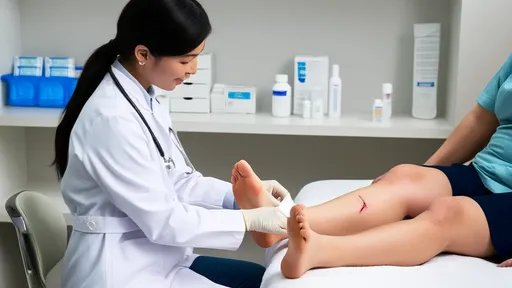Post-surgical scar care is a critical aspect of the recovery process that often doesn’t receive the attention it deserves. While the primary focus is usually on the surgery itself, how you care for your wound afterward can significantly impact the appearance and health of the resulting scar. Proper scar management not only improves cosmetic outcomes but also minimizes discomfort and reduces the risk of complications such as hypertrophic scarring or keloids. The journey to optimal healing begins the moment your surgery is completed and continues for months, sometimes even years, depending on the type of incision and your body’s natural healing tendencies.
The first few weeks after surgery are the most crucial for scar formation. During this period, the body works to repair the damaged tissue by producing collagen, a protein that helps bind the skin together. However, if collagen production is excessive or disorganized, it can lead to raised, thickened, or discolored scars. This is why early intervention is key. Keeping the incision clean and moist is essential. Dry wounds are more prone to scabbing, which can delay healing and increase scarring. Using a thin layer of petroleum jelly or a specialized ointment recommended by your surgeon can create a protective barrier, allowing the skin to heal smoothly beneath it.
Sun exposure is one of the most overlooked yet damaging factors in scar development. Fresh scars are highly sensitive to ultraviolet (UV) rays, which can cause permanent hyperpigmentation, making them more noticeable. Even if the scar is covered by clothing, UV radiation can penetrate thin fabrics. Applying a broad-spectrum sunscreen with an SPF of 30 or higher is non-negotiable once the wound has fully closed. For scars in areas that are difficult to cover, such as the face, wearing a wide-brimmed hat or seeking shade can provide additional protection. This step should be maintained for at least a year to ensure the scar matures evenly.
Massage therapy is another effective technique for improving scar texture and flexibility. Once the incision has sufficiently healed—usually after two to four weeks—gentle massage can help break down excess collagen and improve blood circulation to the area. Using a silicone-based gel or oil during the massage can enhance the benefits by keeping the skin hydrated. The pressure applied should be firm but not painful, moving in circular motions along the length of the scar. Over time, this practice can soften the scar tissue and reduce tightness, particularly for those who have undergone extensive surgeries like joint replacements or abdominal procedures.
Silicone sheets and gels have become a gold standard in scar management due to their proven efficacy. These products work by creating a hydrating environment that regulates collagen production. Silicone sheets are particularly useful for larger, flat scars, while gels are ideal for smaller or irregularly shaped areas. Studies have shown that consistent use of silicone products can significantly reduce scar thickness and discoloration. For best results, they should be applied daily for at least 12 hours over several months. While they may seem like a minor addition to your routine, their long-term benefits are well worth the commitment.
Nutrition plays a surprisingly significant role in how well your scar heals. A diet rich in vitamins and minerals supports the body’s repair mechanisms. Vitamin C, for instance, is essential for collagen synthesis, while zinc aids in tissue regeneration. Protein is another critical component, as it provides the building blocks for new skin formation. Staying hydrated is equally important; water helps maintain skin elasticity and flushes out toxins that could impede healing. Avoiding smoking and excessive alcohol consumption is also advisable, as these habits can constrict blood vessels and deprive the healing tissue of vital oxygen and nutrients.
For those prone to keloids or hypertrophic scars, more advanced treatments may be necessary. Corticosteroid injections can help flatten raised scars by reducing inflammation and slowing collagen production. Laser therapy is another option, particularly for older scars that have already matured. Fractional lasers work by creating microscopic injuries in the skin, stimulating the body to produce new, healthier tissue. While these treatments can be highly effective, they often require multiple sessions and should be administered by a qualified dermatologist or plastic surgeon. Early consultation is key to determining the best course of action for your specific type of scar.
Emotional and psychological aspects of scarring should not be underestimated. For many people, scars serve as a constant reminder of trauma or illness, affecting self-esteem and body image. Seeking support from a therapist or joining a patient community can provide emotional relief and practical advice. It’s important to remember that scars are a natural part of healing and that their appearance will continue to improve over time. Patience and consistency in your care routine will yield the best possible outcome.
Ultimately, postoperative scar care is a multifaceted process that demands attention to detail and a proactive approach. From the moment your surgery ends, every choice you make—whether it’s how you clean the wound, what you eat, or how you protect the scar from the sun—can influence the final result. While some factors, like genetics, are beyond your control, adhering to these guidelines can help you achieve a scar that is as minimal and unobtrusive as possible. The goal isn’t perfection but rather a healed wound that allows you to move forward with confidence and comfort.

By /Aug 7, 2025

By /Aug 6, 2025

By /Aug 6, 2025

By /Aug 6, 2025

By /Aug 6, 2025

By /Aug 6, 2025

By /Aug 6, 2025

By /Aug 6, 2025

By /Aug 6, 2025

By /Aug 6, 2025

By /Aug 6, 2025

By /Aug 6, 2025

By /Aug 6, 2025

By /Aug 6, 2025

By /Aug 6, 2025

By /Aug 6, 2025

By /Aug 6, 2025

By /Aug 6, 2025

By /Aug 6, 2025

By /Aug 6, 2025